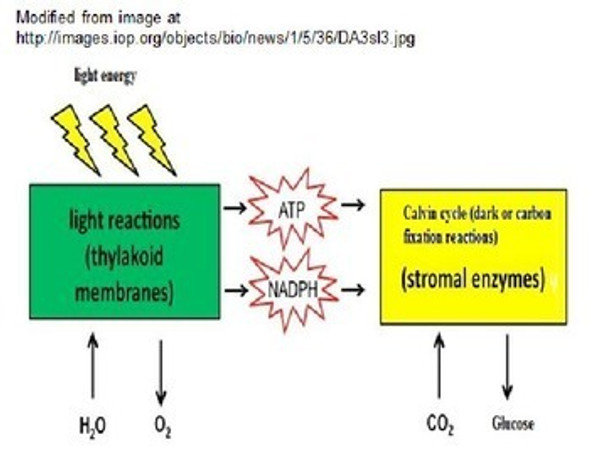Description
This zip file contains many different activities (51 pages of student handouts and a PowerPoint with a total of 38 slides) which can be used to compose a unit for Chemistry students on topics involving acids and bases. Topics included in this unit are properties of acids and bases, Arrhenius and Bronsted acid-base theory, conjugate acid-base pairs, neutralization/hydrolysis, molarity, pH scale, titrations, as well as other related topics. These lessons may be used with any high school Chemistry class. Many components within this lesson are suitable for a distance learning setting. Some aspects of these lessons are very adaptable to an enriched middle level science curriculum.
Many documents are included in both word docx as well as pdf format to allow editing for specific teacher needs.
The specific contents of the learning package includes the following items (the page count for these items are actual student handouts as answer key page counts are not included):
-- Marzano self assessment scale including learning goals and Common Core Reading/Writing and Mathematics Standards for students specific to this unit
-- Cloze notes handout for students with learning goals (8 pages)
-- 34 slide PowerPoint to accompany the cloze notes
-- Titration Lab (vinegar) with key (4 pages)
-- Titration shockwave file
-- Properties and Definitions of Acids and Bases Worksheet with key (2 pages)
-- pH and Indicators Worksheet with key (4 pages)
-- Neutralization and Hydrolysis Worksheet with key (1 page)
-- Review of prior acid-base work with key (2 pages)
-- 26 question review for acid-base test with key (2 pages)
-- Conjugate Acid-Base pairs worksheet with key (1 page)
-- Titration worksheet with key (3 pages)
-- Acids, Bases and Salts final Exam (30 mixed questions) with key (3 pages)
-- Introduction to Acids, Bases and Indicators Common Core Reading, Writing and Lab Activity (21 pages) This activity contains two labs, as well as reading and written work and is described below.
The 21 page reading, writing and laboratory activity introduces the student to basic concepts involving acids and bases, pH and pH indicators. Practical reasons for the study of these topics are presented in the reading selections. Two classic laboratory activities involving the use of red cabbage as a pH indicator and the use of six different pH indicators to determine the pH of common substances in solution are included with the reading activity. Over forty questions of varying form and difficulty are included to reinforce the information developed through the reading and laboratory activities.
This activity has been correlated to the Common Core standards and the NGSS Standards.
Learning Goals
Upon the completion of this unit the student will be able to:
1. identify acids and bases based on their conductivity, taste, reaction with litmus and phenolphthalein, and several other properties.
2. define the term electrolyte and recognize that acids, bases, and salts are good electrolytes.
3. use reference tables to identify the names of common acids and bases.
4. know that the products of all reactions between strong acids & metals is hydrogen and a salt.
5. know that only active metals react with acids.
6. define the terms Arrhenius acid and an Arrhenius base and Bronsted acid and Bronsted base.
7. identify monoprotic, diprotic, triprotic acids and the number of protons they generate.
8. define the term amphoteric and explain why water is amphoteric.
9. recognize the products of any neutralization are always water and a salt.
10. state the net ionic equation of all neutralization reactions.
11. recognize that when the concentration of H+ ions equals the concentration of OH- ions neutralization occurs.
12. describe the process of acid-base titration.
13. use the equation MaVa=MbVb be able to solve titration problems.
14. know the mathematical equation for pH and pOH.
15. know that the pH scale is a base ten logarithmic scale and that a change of one pH unit is a ten-fold change in hydrogen (hydroxide) ions.
16. use a reference table listing common indicators and identify their color changes in various acid/base solutions.
Common Core State Standards Connections:
ELA/Literacy
RST.9-10.7 Translate quantitative or technical information expressed in words in a text into visual form (e.g., a table or chart) and translate information expressed visually or mathematically (e.g., in an equation) into words.
WHST.9-12.5 Develop and strengthen writing as needed by planning, revising, editing, rewriting, or trying a new approach, focusing on addressing what is most significant for a specific purpose and audience.
WHST.9-12.9 Draw evidence from informational texts to support analysis, reflection, and esearch.
Mathematics
MP.2 Reason abstractly and quantitatively.
MP.4 Model with mathematics.
HSN-Q.A.1 Use units as a way to understand problems and to guide the solution of multi-step problems; choose and interpret units consistently in formulas; choose and interpret the scale and the origin in graphs and data displays.
HSN-Q.A.3 Choose a level of accuracy appropriate to limitations on measurement when reporting quantities.
This work is licensed under a Creative Commons Attribution-NonCommercial 4.0 International License.
View my complete High School Complete Chemistry Course











